In this article:
Muscle relaxants are used to ease muscle spasms and improve muscle tone to reduce aches and pains. They are a specific class of medicines prescribed by doctors to essentially “relax” the muscles. (1)
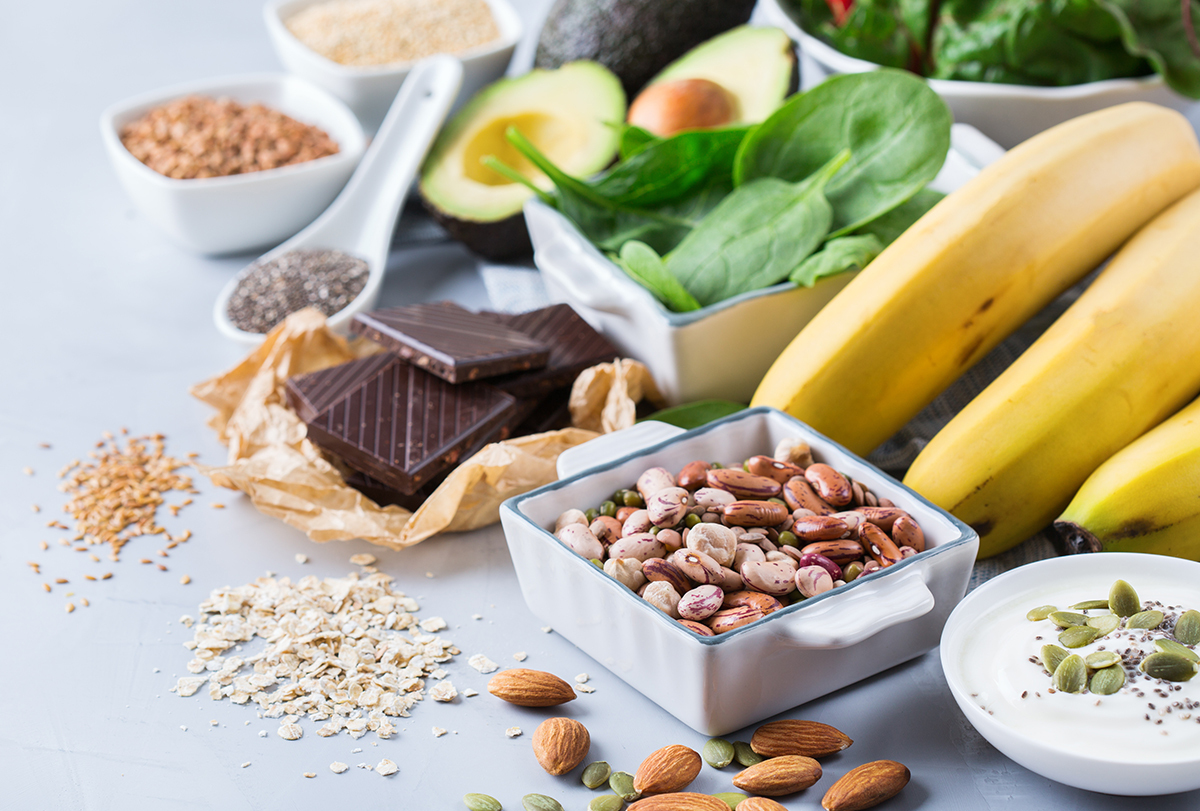
Some natural foods can bring about a similar effect due to their antioxidant content, and several studies have reported that intake of antioxidant-rich foods or supplements can result in some relief from muscle soreness. (2)
Foods That May Act as Muscle Relaxants
Some foods are known to bring about pain relief and reduce inflammation. Here are some foods you can consume that act as muscle relaxants. (3)
1. Protein-rich foods
Foods that contain good-quality protein such as fish and lean meat have the ability to repair and heal muscles.
In a study on marathon runners, protein supplementation improved muscle recovery after 72 hours and reduced fatigue and muscle soreness. These results were observed when protein was consumed immediately following exercise. (4)
In another study on women, casein and whey supplement improved performance and reduced the extent of muscle damage and inflammation. This was critical in recovering from muscle damage due to exercise. (5)
2. Cherry
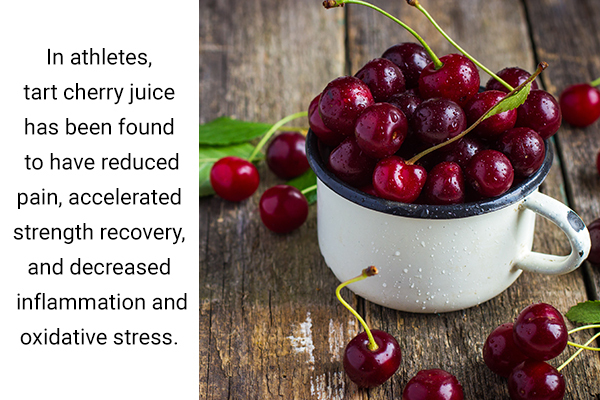
Fresh tart cherry juice has been extensively studied for its role in reducing muscle damage. Their anthocyanin and flavonoid content has antioxidant and anti-inflammatory properties that reduce pain-causing substances in the body. (3)
In a study that included athletes, tart cherry juice reduced pain, accelerated strength recovery, and decreased inflammation and oxidative stress. The athletes were given 8–12-ounce juice twice a day for at least 2 days after the performance. (6)
3. Caffeine
Caffeine-rich foods and drinks such as tea and coffee can also have some muscle relaxant effects.
Caffeine is a hypoalgesic (reduces the feeling of pain) and can reduce muscle pain in the forearm at doses of 200 mg. In addition, studies have found caffeine to reduce thigh pain during exercise when it was taken before exercise. (3)
4. Turmeric
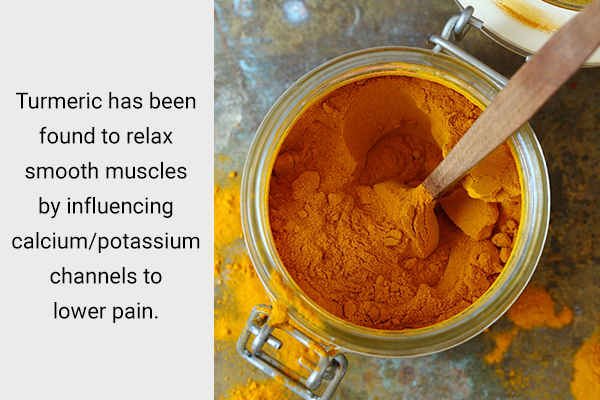
Turmeric is used in many traditional medicines to treat wounds, inflammation, and pain. The curcumin in turmeric exerts anti-inflammatory properties similar to some nonsteroidal anti-inflammatory drugs. (3)
In animal models, turmeric relaxed smooth muscles by influencing calcium/potassium channels to lower pain. (7)
5. Chili pepper
Chili pepper has a potent bioactive compound called capsaicin, which has analgesic properties. (8)
Capsaicin desensitizes the nerves that feel pain by improving the influx of calcium into the muscles. Several topical ointments contain capsaicin and can be used to reduce pain by relaxing muscles. (8)
Before using capsaicin, make sure you do an allergy test. Avoid ingesting and contact with eyes as it may cause severe irritation and even burns depending on the concentration of capsaicin in the cream.
6. Chamomile
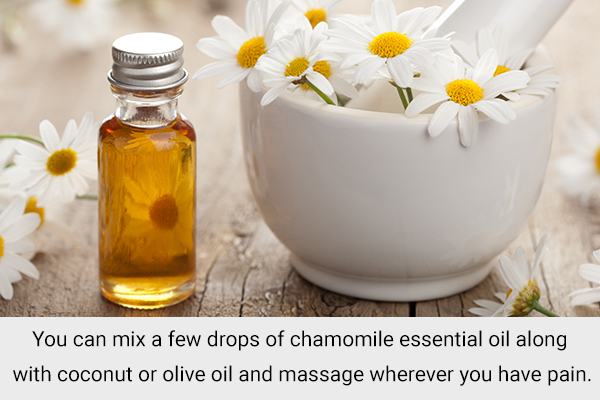
Chamomile has antispasmodic, anti-inflammatory, and antiseptic properties. (3)
Test-tube studies on chamomile identified four potential compounds that had a muscle relaxant effect on animal and human muscles. Chamomile essential oil was also useful in exerting the same benefit. (9)
Used chamomile teabags can be used as hot packs on the site of pain. Alternately, you can mix a few drops of chamomile essential oil along with coconut oil or olive oil and massage the mixture wherever you have pain.
7. Peppermint
Peppermint is a commonly used herb in many kitchens across the world. It can bring about relief from stomach distress due to its antispasmodic capability. (10)
Due to its bioactive compounds, peppermint was found to be effective in relaxing muscles through the calcium/potassium channels. (10)
A peppermint poultice can be made by tying dried peppermint in a small piece of cloth, heating it, and using it on the site of pain. Diluted peppermint oil (in coconut oil or olive oil) can also be used as a massage oil.
8. Pomegranate
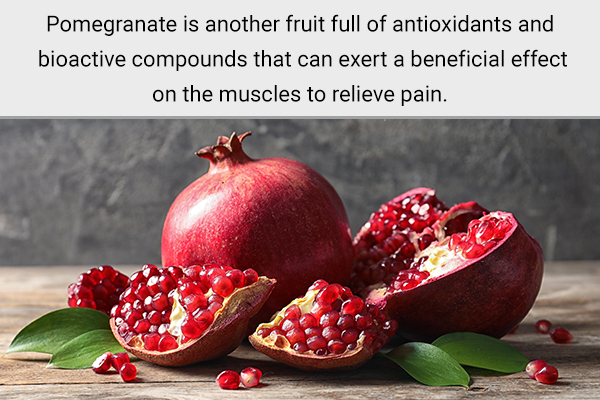
Pomegranate is another fruit full of antioxidants and bioactive compounds that can exert a beneficial effect on the muscles to relieve pain. (3)
In a small study of professional weightlifters, pomegranate juice supplementation following a weight-lifting session relieved muscle soreness in the knee. Additionally, for 2 days, it reduced blood pressure and aided in the recovery after intense training. (11)
9. Blueberries
Blueberries have a rich nutrient profile with plenty of antioxidant compounds. In a study of women, consuming a blueberry smoothie before and after an exercise session improved the recovery of muscles. (12)
10. Lemongrass

Lemongrass is an herb used in traditional Indian, Chinese, and Brazilian medicine to treat stomach aches and arthritic pain. (13)
In animal studies, the leaves, stems, and roots of lemongrass were effective in relaxing muscles. (13)
Lemongrass can be used in tea or its diluted essential oil can be used in massage.
11. Magnesium-rich foods
Magnesium deficiency has been associated with muscle spasms and cramps of the leg, neck, back, face, and calves. Consuming magnesium-rich foods can help resolve this deficiency and reduce cramps and pain. (14)
Whole grains, beans, nuts, and green leafy vegetables are rich in magnesium. (14) Some studies have found magnesium to be useful only in certain types of cramps, so it is advisable to consume supplements only after acquiring a prescription. (15)
How to Reduce Exercise-Induced Cramps
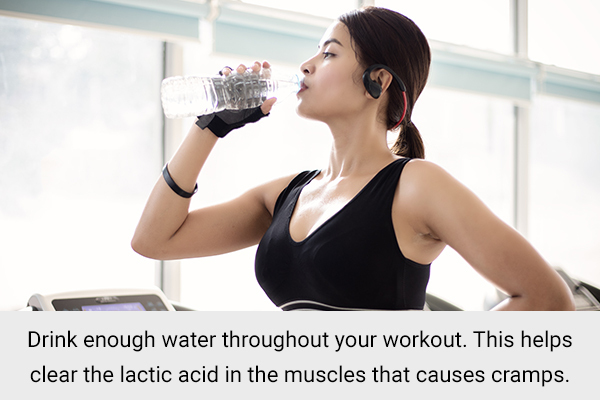
Several factors can cause muscle cramps and are often not preventable. However, there are certain tips you can follow to reduce cramping and soreness due to exercise.
- Drink enough water throughout your workout. This helps clear the lactic acid in the muscles that causes cramps.
- Take a warm-to-hot shower after an exercise session to relax your muscles.
- If the soreness persists, consult a doctor.
Precautions to Consider
Certain foods may interact with certain medications, so you must consult your doctor before using any natural foods for their medicinal benefits.
While certain essential oils can be effective (such as chamomile, peppermint, and lemongrass), they need to be used with caution and never without dilution.
Most-Asked Questions
Can I use chamomile, peppermint, or lemongrass essential oil directly on my skin?
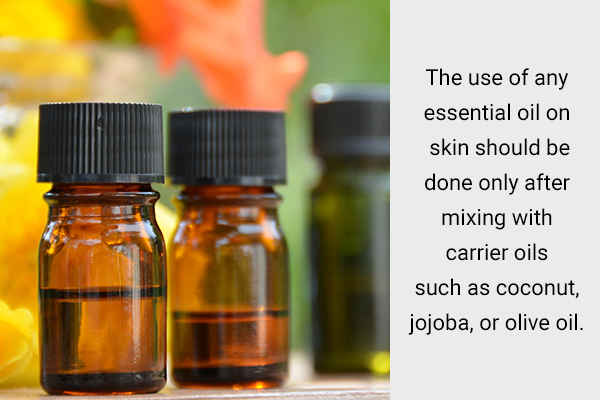
The use of any essential oil on the skin should be done by mixing it with carrier oils such as coconut oil, jojoba oil, or olive oil. Dilute 1–2 drops of essential oil in 8–10 drops of carrier oil before use. (16)
Are there supplements that can relax tight muscles?
Supplements that may relax muscles are available, but do not take them without consulting a doctor.
What are the conditions that can cause muscle tightness?
Certain chronic illnesses such as multiple sclerosis, fibromyalgia, diabetes, neuropathy, cirrhosis, and kidney disease can cause muscle pain and cramps. (17)
Final Word
Natural muscle relaxants are foods that can help relieve muscle soreness and inflammation. They influence the smooth muscle cells to reduce the feeling of pain and ease muscle contraction to relax the muscle, which eases pain.
Foods that act as muscle relaxants are useful in the recovery from intense exercise, for athletes, and for people suffering from chronic pains. Some of these foods can also ease abdominal cramps and are free from risks that may accompany the use of medication.
- Was this article helpful?
- YES, THANKS!NOT REALLY


